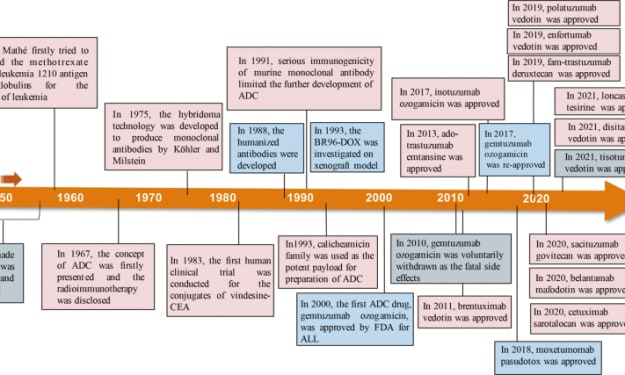HOW TO THINK LIKE SHERLOCK HOLMES
What Sherlock Holmes offers isn’t just a way of solving crimes. It is an entire way of thinking, a mindset … a model for thinking, a way of being.

“Holmes was a detective second to none, it is true. But his insights into the human mind rival his greatest feats of criminal justice. What Sherlock Holmes offers isn’t just a way of solving crimes. It is an entire way of thinking, a mindset … a model for thinking, a way of being.” (Maria Konnikova)
WHY IT IS IMPORTANT TO LEARN TO THINK LIKE SHERLOCK HOLMES?
The world we live is in binding us to become totally disconnected not just from our own selves, but from the people and from the way we treat the information we come across. We are mindless. We let out minds drift away, we cannot pay attention anymore and we are attractive the multi-tasking forces in order to keep up.
But, is this the answer?
In recent years, studies have shown that meditation like thought for as little as 15 minutes a day, can shift bran states, and that looking at scenes of nature, for even a short while, can help us become more insightful, more creative and more productive. We also know that our brains are not built for multi-tasking. When we are made to do multiple things at once, not only do we perform worse on all of them, but our memory decreases and our general wellbeing suffers a lot. We live on, blindly unaware of how much we are missing, of how little we grasp of our own thought process and how much better we could be if only we would have taken the time to understand and to reflect. But it is not that we are not capable of doing so, it’s just that we do not choose to do it anymore.
“Think back to your childhood. Chances are, if I asked you to tell me about the street you grew up, you would be able to recall any number of details. The colour of the houses. The quirks of the neighbours. The smells of the seasons. How different the street was at different times of day? Where you played. Where you walked. Where you were afraid of walking. I bet you could go on for hours. As children, we are remarkably aware.
We absorb and process information at a speed that we will never again come close to achieving. New sights, new sounds, new smells, new people, new emotions, new experiences: we are learning about our world and its possibilities. Everything is new, everything is exciting, everything engenders curiosity. And because of the inherent newness of our surroundings, we are exquisitely alert, we are absorbed, we take it all in. And what’s more, we remember: because we are motivated and engaged, we not only take the world in more fully than we are ever likely to do it again, but we store it for the future. But as we grow older … we think: been there, done that, don’t need to pay attention to this, and when in the world, will I ever need to know or use that? Before we know it, we have shed that innate attentiveness, engagement and curiosity for a host of passive, mindless habits.
ASK YOURSELF:
• How many thoughts float in and out of your head without your stopping to identify them?
• How many ideas and insights have escaped because you forgot to pay attention?
• How many decisions or judgements have you made without realizing how or why you made them, driven by some internal default settings of whose existence you’re only vaguely, if at all, aware?
• How many days have gone by where you suddenly wonder what exactly you did and how you got to where you are? We’ll take Holmes’s methodology to explore and explain the steps necessary for building up habits of thought that will allow you to engage mindfully with yourself and your world as a matter of course.” (Anna Konnikova)
HERE ARE 10 WAYS ON HOW TO THINK LIKE SHERLOCK HOLMES:
1. Use your mind to scrutinize everything you encounter, an idea, an information, a knowledge, a gossip. One of the things that characterized Sherlock Holmes’s thinking was a natural scepticism and inquisitiveness toward the world. The truth is our minds are pre-set to accept everything they are given. First, we believe and only after that we question. Reboot your mind and avoid assuming anything is the way it is. Think of everything by adding a healthy dose of scepticism.
2. Understand your brain’s bias and use it to be more organized in your thoughts and clear about the world. “Our minds love nothing more than jumping to conclusions.” The Affect Heuristic – how we feel is how we think. A happy and relaxed state of mind receives easily a certain information, it is influenced in the direction that the speaker wants you to be influenced to. The Availability Heuristic – we use what is available to the mind at any given point in time. As an example, when we meet a stranger, we immediately draw an impression on him/her based on our past experiences (including clothes, body language, appearance and language) and patterns of our mind on creating judgement along with the state of being in that specific day. We won’t be able to control every piece of information that our brains retain. But we can decide on which information we pay more attention based on the misconception perceptions that our minds work on.
3. Pursue your brain into going from the passive state of mind into the active state of it. What has influenced my first impression? And consequently, has that first impression in turn influenced others? The message is simple: never forget that an initial impression is only that, and take a moment to reflect on what caused it, and what that may signify for your overall aim.
4. Observation – knowing what and how to observe. This is why at this stage; we need the other 3 steps. Direct your observation in compliance with your scrutiny process, with your understanding of being active and sceptical not just about the world, but about your own mind too. What details do you focus on? What details do you omit? And how do you take in and capture those details that you choose to zoom in on? You don’t just take into your brain all details; you take it as organized and as clearly as possible. When you will need that information, you need to know how to search it. Choosing wisely means being selective. It means looking with the full knowledge that what you note – and how you note it – will form the basis of any future deductions you might make.
5. Filter the information you have, everything that you receive through the use of the above steps. Don’t let your lazy wandering default state of mind to think for you, as this is another bias of our brains. We need to tell our brains what and how to filter the data it receives from the world. How? Read the next steps:
6. Be selective. We want to learn to pay attention better, to become superior observers, but we can’t hope to achieve this if we pay attention to everything. Quantity versus Quality. What we need to do is allocate our attention mindfully. Allocate your attention strategically, notice everything that it is important to the situation you are serving. Make the most of your limited resources, especially your attention.
7. Be objective. Understanding a situation in its fullness requires several steps, but the first and the fundamental rule is to realize that observation and deduction are not the same. Learn to separate the situation from interpretation, yourself (your thoughts, your emotions, from what you are seeing. Don’t jump to making a judgement immediately after observing.
8. Be inclusive. When we are being inclusive, we never forget that all of our senses are constantly in play. We don’t let them drive our emotions and decisions. Instead, we actively enlist their help and learn to control them. For instance, a smell (the olfactory senses are very powerful triggers of memory and emotions) may let you make a deduction based on your previous experience with that particular smell, affecting the judgement of the situation you encounter. Likewise, when we touch something cold or warm, we may become more cold or warmer in our disposition. If we are touched by someone in a reassuring way, we may suddenly find ourselves taking more risks or being more confident than we otherwise would. When we hold something heavy, we are more likely to judge something (or someone) to be weightier and more serious. None of this has anything to do with observation and attention per se, except that it can throw us off a carefully cultivated path without our awareness. The environment may influence us, we need to pay attention to it and never assume anything.
9. Be engaged. Your mind needs to be active, involved in what’s doing. When we are engaged in what we are doing, we persist longer at difficult problems, we experience the flow as mentioned in a previous article here, we become more motivated, we even become LESS likely to commit some of the most fundamental errors of observation such as mistaking a person’s outward appearance for factual detail of his/her personality. When you feel strong personal engagement with something, you will feel it is worth that extra push.
10. Imagination is the essential next step of the thought process. It uses the building blocks of all the observations that you’ve collected to create the material that can then serve as a solid base for future deductions. Imagination must come from a basis in real, hard knowledge, and it is a setup for deduction. The imagination, the creation is grounded in reality, everything that you have stored in your memory so far out of the consistent, detailed observations you have made. And bear in mind that in order to think more like Sherlock Holmes, you should deduce only from what you’ve observed and nothing more. The imagination process is helpful to bring you to the deduction process. Without imagination we would never be able to reach the heights of thought that we are capable of; we would find it difficult to use the facts we have in any way that would improve our judgement and decision making. Imagination allows us to see things that aren’t so. It lets us see what might have been and what might be even in the absence of firm evidence.
When all of the details are in front of you, how do you re-arrange it? How do you know which is important? Much of imagination is about making connections that are not entirely obvious, between elements that at first seem disparate.
Following Sherlock Holmes’s 10 steps to a more mindfulness state of being, we are less prone to stress, to making errors in our thinking process leading us to misconceptions, misjudgements and especially to mindless actions and behaviours
WHICH OF THE 10 WAYS TO HOW TO THINK LIKE SHERLOCK HOLMES HAVE YOU EXPERIENCED SO FAR?
About the Creator
Annaelle Artsy
Me, myself & I
Slow living in the reading






Comments
There are no comments for this story
Be the first to respond and start the conversation.